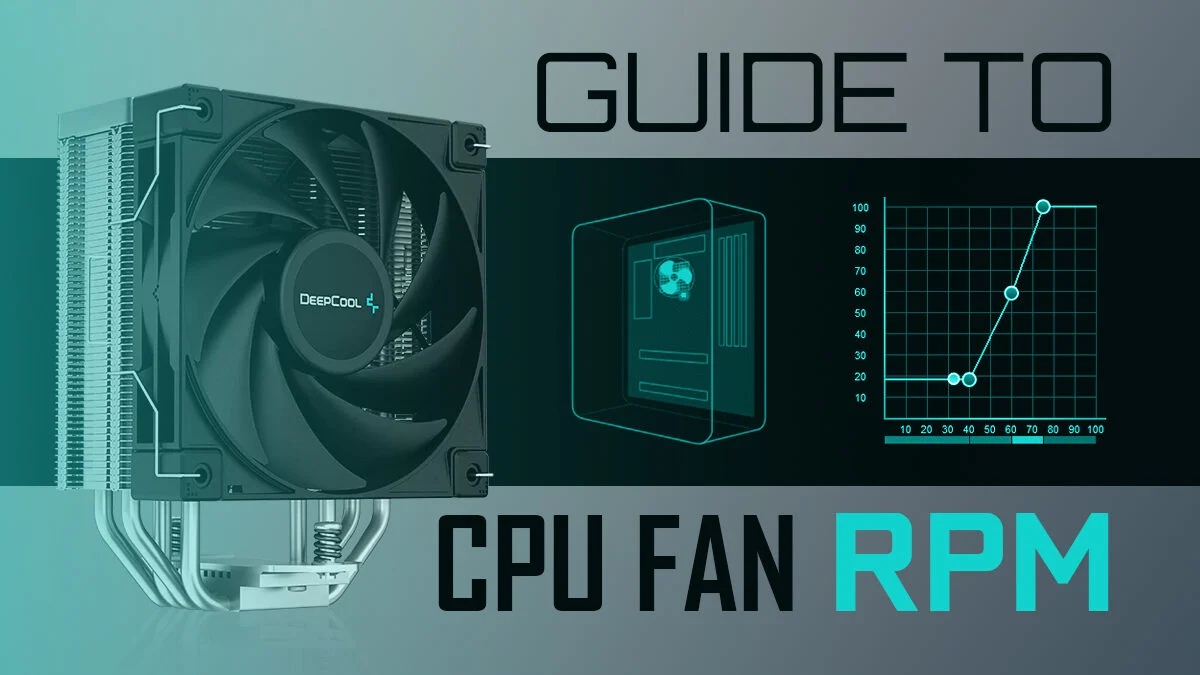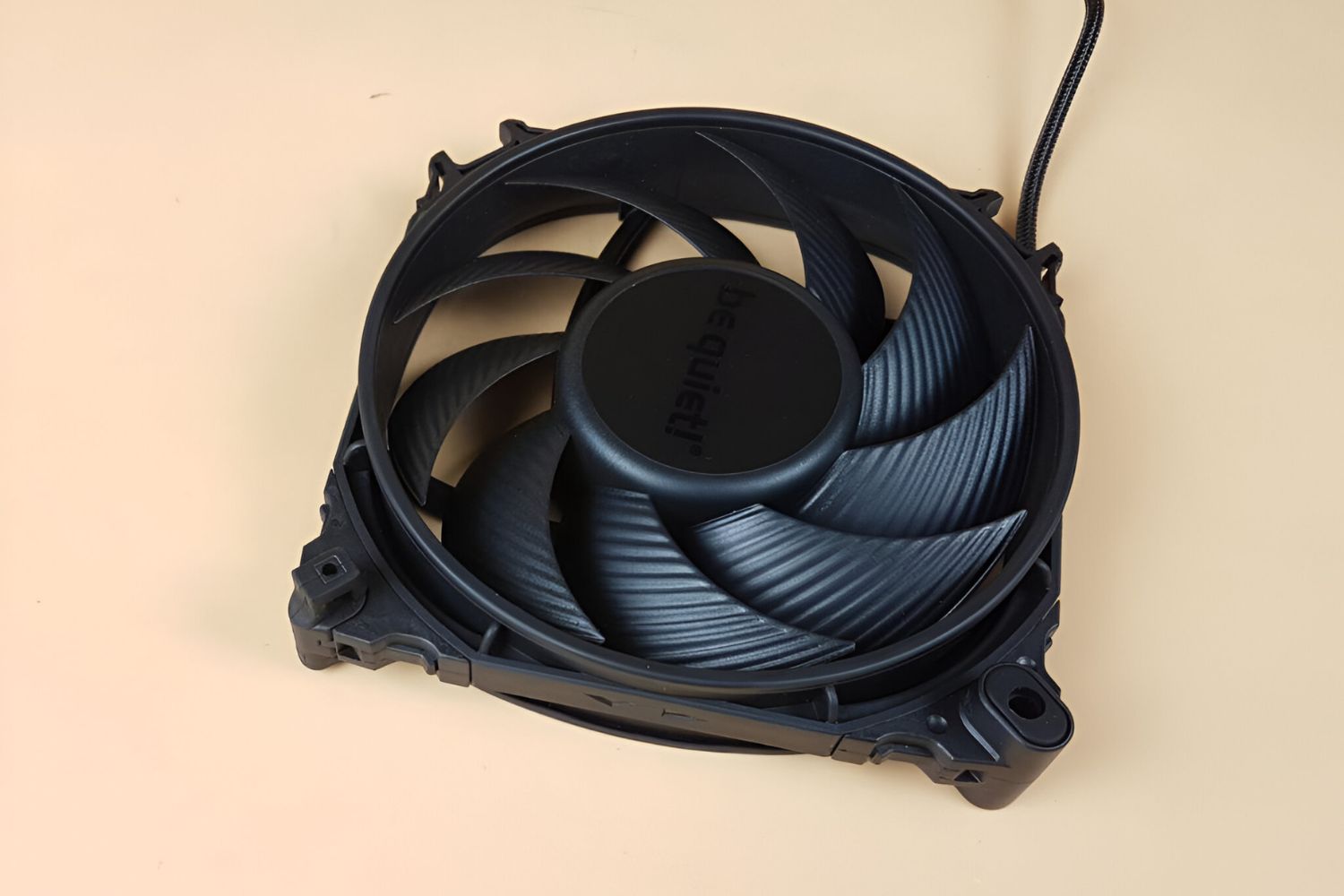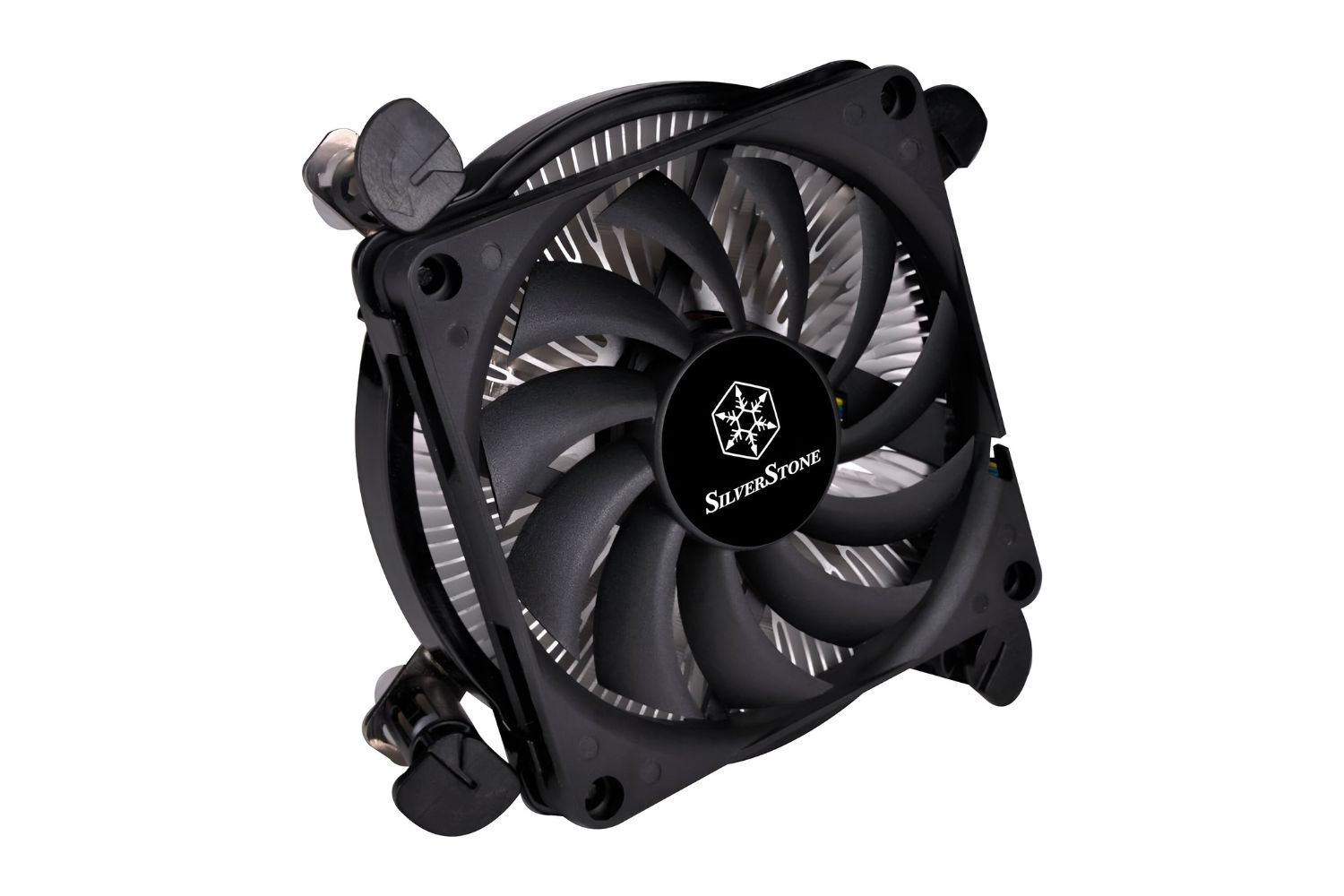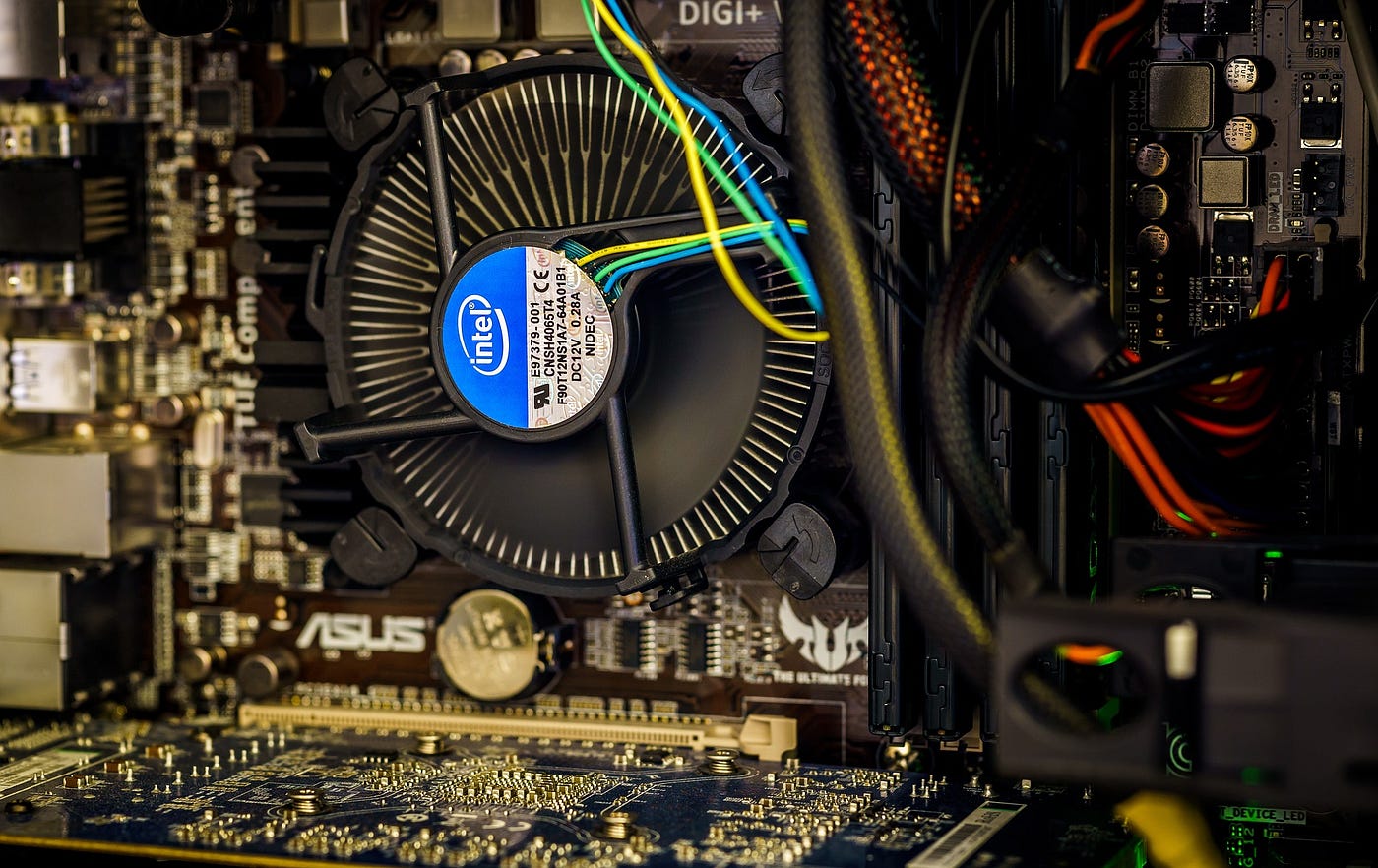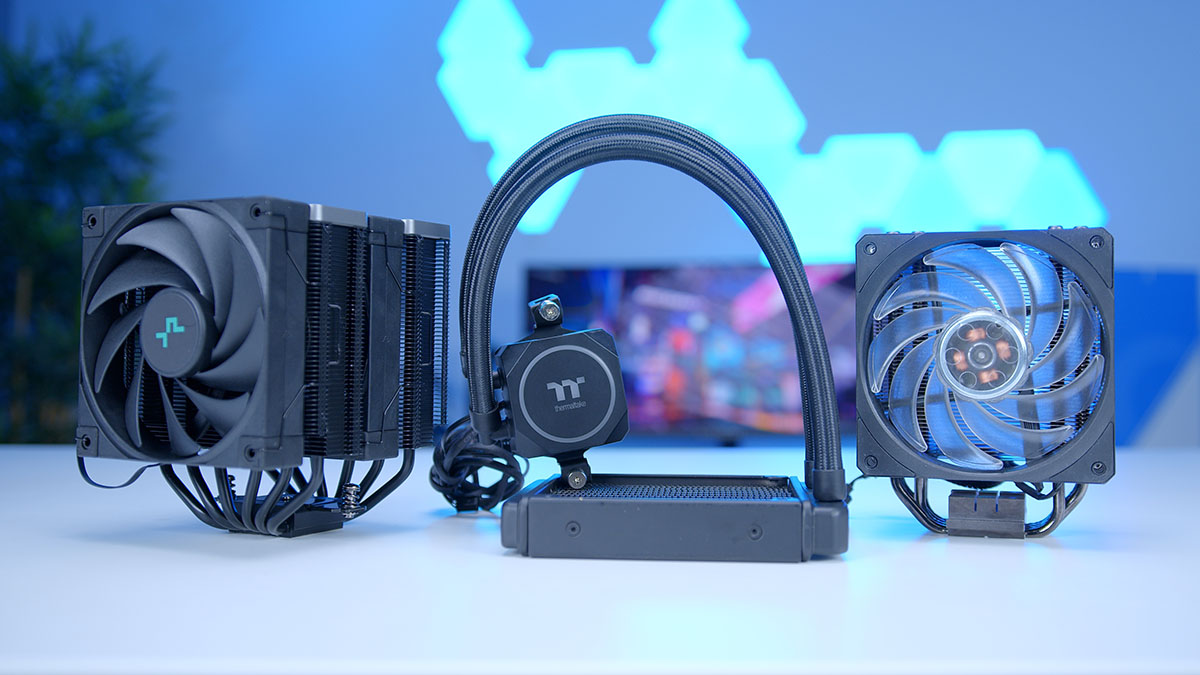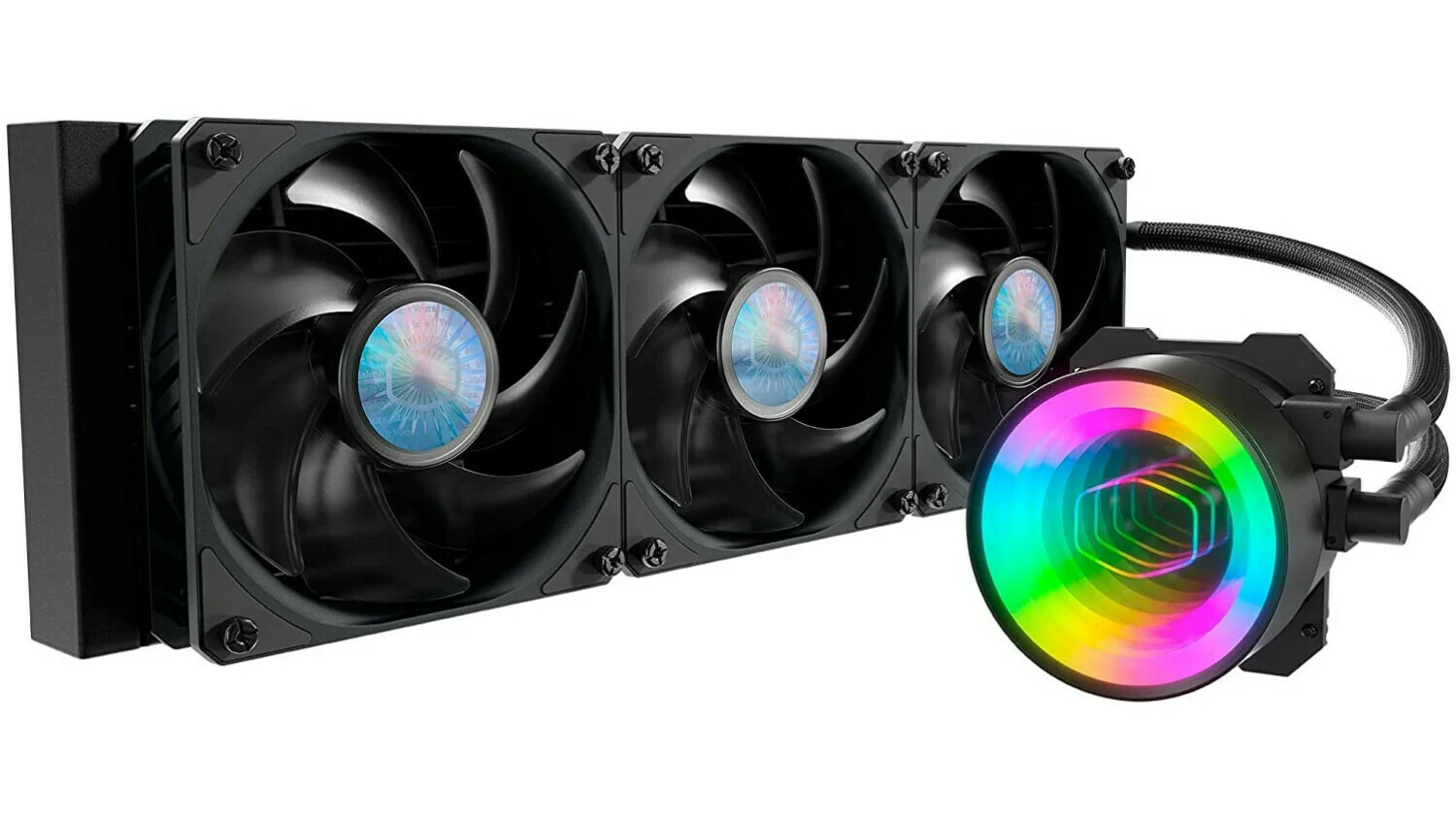Introduction
Welcome to the world of computer hardware, where every component plays a crucial role in keeping your system running smoothly. One such component that plays a vital role in maintaining the optimal performance of your CPU is the CPU fan. The CPU fan is responsible for cooling down your processor and preventing it from overheating, which can lead to system instability and potential damage.
But have you ever wondered what the ideal speed for your CPU fan should be? The speed at which your CPU fan operates can significantly impact the overall performance and longevity of your computer. In this article, we will explore the importance of maintaining the proper CPU fan speed and understand how it can affect your system.
Understanding the functioning of the CPU fan and its impact on your system’s performance is essential for every computer enthusiast, whether you are a casual user or a gaming enthusiast. By knowing the factors that influence CPU fan speed and the recommended RPM (Revolutions Per Minute), you can ensure that your CPU fan operates optimally and protects your processor from overheating.
Throughout this article, we will delve into the factors that affect CPU fan speed, the benefits of maintaining optimal speed, and how to check and adjust your CPU fan speed. Additionally, we will cover the recommended RPM range provided by CPU manufacturers and the consequences of running the CPU fan at an incorrect RPM.
So, whether you are a beginner or an experienced computer user, the information shared in this article will help you make informed decisions regarding your CPU fan speed and ensure the longevity and smooth operation of your computer system.
Understanding CPU Fan Speed
The CPU fan speed refers to the rotational speed at which the fan blades spin, measured in revolutions per minute (RPM). This speed is directly linked to the amount of cooling provided to the CPU.
The primary function of the CPU fan is to dissipate the heat generated by the processor. As the CPU performs various tasks, it generates heat due to the electrical currents flowing through its circuits. If this heat is not effectively dissipated, it can lead to thermal throttling, which reduces the CPU’s performance and can even cause system shutdowns to prevent damage.
The CPU fan, along with the heatsink, works together to dissipate the heat from the CPU. The fan pulls the hot air away from the heatsink, allowing cooler air to take its place. The faster the fan spins, the more heat can be dissipated, resulting in lower CPU temperatures.
It is important to note that different CPUs have different thermal characteristics and power requirements. Therefore, the optimal fan speed for one CPU may not be the same for another. The cooling needs of a low-power CPU used in a home office computer will differ from those of a high-performance CPU in a gaming rig.
The appropriate CPU fan speed is determined by finding the right balance between sufficient cooling and acceptable noise levels. Higher fan speeds can provide better cooling but can also result in louder operation, which may be undesirable in quiet environments.
Modern motherboards and BIOS settings often allow for automatic fan speed control based on the CPU temperature (known as temperature-controlled fan speed). This feature adjusts the fan speed dynamically, increasing it when the CPU temperature rises and reducing it when the CPU is running cooler.
Understanding the concept of CPU fan speed is crucial in maintaining optimal performance and preventing overheating issues. In the next section, we will explore the importance of maintaining the proper CPU fan speed.
Importance of Proper CPU Fan Speed
The proper CPU fan speed is essential for ensuring the longevity and optimal performance of your computer system. Maintaining the right fan speed offers several key benefits:
- Temperature Regulation: The primary function of the CPU fan is to regulate the temperature of the processor. By spinning at the appropriate speed, the fan helps dissipate heat generated by the CPU during operation. This helps prevent the processor from reaching critical temperatures that can result in thermal throttling or even hardware failure.
- System Stability: Operating your CPU fan at the correct speed helps maintain system stability. When the CPU temperature is properly controlled, it reduces the risk of system crashes, freezes, or unexpected shutdowns that may occur due to overheating. This is especially crucial during resource-intensive tasks such as gaming or video editing, where the CPU is under heavy load.
- Improved Performance: A properly functioning CPU fan ensures that your processor can operate at its optimal performance levels. When the CPU temperature is kept within the recommended range, it allows the processor to work efficiently without getting throttled. This results in better overall system performance, faster processing speeds, and smoother multitasking capabilities.
- Extended Component Lifespan: Overheating can significantly reduce the lifespan of your computer components, especially the CPU. Excessive heat can cause thermal fatigue, leading to the degradation of important internal components. By maintaining the proper CPU fan speed, you can minimize the risk of overheating-related wear and tear, thus extending the lifespan of your CPU and other critical components.
- Energy Efficiency: Running your CPU fan at the correct speed can also contribute to energy efficiency. When the system is properly cooled, it reduces the need for the CPU to work harder to lower its temperature. This, in turn, helps to reduce power consumption, resulting in a more energy-efficient computer system and potentially lower electricity bills.
By understanding the importance of maintaining the proper CPU fan speed, you can ensure the optimal functioning of your computer system and protect it from potential overheating-related issues. In the next section, we will explore the factors that can affect CPU fan speed.
Factors Affecting CPU Fan Speed
Several factors can influence the speed at which your CPU fan operates. Understanding these factors is essential for optimizing your CPU fan’s performance. Here are some of the key factors that can affect CPU fan speed:
- CPU Load: The CPU load, or the amount of processing power being used, directly affects the heat generated by the processor. When the CPU is under heavy load, such as when running demanding applications or multitasking, the fan speed will typically increase to dissipate the additional heat. On the other hand, during periods of low CPU usage, the fan speed may decrease to conserve energy and reduce noise levels.
- System Temperature: The temperature inside your computer system, including ambient temperature and temperature inside the case, can impact CPU fan speed. If the overall system temperature is high, the fan speed will increase to cool down the CPU and other components. Conversely, in cooler ambient temperatures, the fan speed may be lower as there is less need for extensive cooling.
- BIOS Settings: The BIOS (Basic Input/Output System) of your motherboard offers settings that can affect CPU fan speed. Many motherboards allow you to configure fan curves or choose preset fan profiles that determine the fan speed at different temperature thresholds. By adjusting these settings, you can customize the fan speed to meet your specific cooling needs and noise preferences.
- Fan Control Software: Fan control software provided by your motherboard manufacturer or third-party applications can also influence CPU fan speed. These software tools often offer advanced customization options, allowing you to fine-tune the fan speed based on CPU temperature or set specific fan speed targets. Using such software can provide greater control over CPU cooling while optimizing noise levels.
- CPU Fan Design and Quality: The design and quality of the CPU fan can impact its speed and performance. Fans with higher-quality bearings and larger fan blades may be able to achieve higher RPMs while maintaining lower noise levels. Additionally, CPU fans with advanced designs, such as those with heat pipe technology or dual-fan configurations, may offer better cooling capabilities, allowing for more efficient heat dissipation at lower speeds.
By considering these factors, you can make informed decisions about optimizing your CPU fan speed and ensuring effective cooling for your processor. In the next section, we will discuss the benefits of maintaining optimal CPU fan speed.
Benefits of Optimal CPU Fan Speed
Maintaining the optimal speed for your CPU fan offers several significant benefits for your computer system. Let’s explore some of these benefits:
- Effective Heat Dissipation: Optimal CPU fan speed ensures efficient heat dissipation from the processor. It helps to keep the CPU temperature within the recommended range, preventing overheating and potential damage to the processor and other sensitive components. By effectively cooling the CPU, optimal fan speed contributes to system stability and reliable performance.
- Reduced Noise Levels: When the CPU fan operates at its optimal speed, it strikes a balance between efficient cooling and acceptable noise levels. Running the fan at unnecessarily high speeds can result in excessive noise, which can be disruptive in quiet environments. By maintaining the right fan speed, you can enjoy quieter operation without compromising on cooling performance.
- Extended Component Lifespan: A properly functioning CPU fan helps prolong the lifespan of your computer’s critical components. By preventing overheating, it reduces the risk of thermal fatigue and premature wear and tear on the CPU and other internal hardware. This can result in a longer life expectancy for your system, saving you from costly repairs or component replacements.
- Improved System Performance: Optimal CPU fan speed ensures that your processor operates at its peak performance levels. By maintaining the recommended temperature range, the CPU can function without thermal throttling, allowing for faster processing speeds and smoother multitasking capabilities. This can enhance your overall system performance, especially during resource-intensive tasks like gaming, video editing, or 3D rendering.
- Energy Efficiency: Running your CPU fan at the correct speed promotes energy efficiency. By effectively cooling the CPU, it reduces the need for the processor to work harder to lower its temperature. This results in lower power consumption and contributes to a more energy-efficient computer system, potentially reducing your electricity bills.
Optimal CPU fan speed plays a crucial role in maintaining the performance, longevity, and reliability of your computer system. By carefully balancing cooling performance and noise levels, you can enjoy the full benefits of an efficiently operating CPU fan. In the next section, we will explore the RPM ranges recommended by CPU manufacturers.
RPM Recommended by CPU Manufacturers
When it comes to the ideal RPM (Revolutions Per Minute) for your CPU fan, it is important to consider the recommendations provided by CPU manufacturers. These recommendations are based on extensive testing and analysis to ensure optimal cooling performance and prevent overheating issues for their specific processor models.
While the recommended RPM can vary depending on the specific CPU model and its thermal characteristics, most CPU manufacturers provide a recommended range for the fan speed. This range typically falls between 1000 and 3000 RPM, but it can differ based on the power requirements, TDP (Thermal Design Power), and cooling capabilities of the CPU.
It is crucial to note that these recommended RPM ranges serve as general guidelines and may not be applicable to every scenario. Factors such as ambient temperature, system configuration, and CPU workload should also be considered when determining the appropriate fan speed.
To find the specific RPM recommendations for your CPU, you can refer to the product documentation or official website of your CPU manufacturer. They often provide detailed specifications and guidelines on cooling requirements, including fan speed recommendations.
It is worth mentioning that some modern CPUs employ dynamic temperature-based fan control mechanisms. In such cases, the CPU fan speed is adjusted automatically based on the CPU temperature. The motherboard and BIOS, along with temperature sensors, regulate the fan speed to ensure optimal cooling while minimizing noise levels.
By following the RPM recommendations provided by the CPU manufacturer, you can ensure that your CPU fan operates within the intended parameters, maintaining the optimal cooling performance and preventing potential heat-related issues.
In the next section, we will discuss different methods to check the CPU fan speed and monitor its performance.
How to Check CPU Fan Speed
Checking the CPU fan speed is an essential part of monitoring your system’s cooling performance and ensuring that it is operating within the desired parameters. Here are a few methods you can use to check the CPU fan speed:
- BIOS Settings: Accessing your computer’s BIOS (Basic Input/Output System) is one way to check the CPU fan speed. Restart your computer and enter the BIOS by pressing the designated key during the startup process (usually shown on the screen). Once inside the BIOS, navigate to the hardware or monitoring section to find the CPU fan speed information. Keep in mind that BIOS interfaces can vary depending on the motherboard manufacturer.
- System Monitoring Utilities: Various system monitoring utilities are available that can provide real-time information about your CPU fan speed. These tools may come bundled with your motherboard or can be third-party software. Examples include CPU-Z, HWMonitor, SpeedFan, and Core Temp. These utilities provide detailed temperature and fan speed readings for monitoring and troubleshooting purposes.
- Motherboard Software: Many motherboard manufacturers offer dedicated software that allows you to monitor and control various aspects of your system, including fan speeds. Check the manufacturer’s website for software specific to your motherboard model. These applications often provide user-friendly interfaces and detailed fan speed information for your CPU and other fans connected to the motherboard.
- Third-Party Fan Control Software: In addition to monitoring tools, there are also third-party fan control software applications available. These tools provide additional customization options for fan speed control. Examples include SpeedFan, Argus Monitor, and MSI Afterburner. These programs allow you to adjust fan speeds manually or create custom fan profiles based on CPU temperature or other parameters.
Using these methods, you can easily check the CPU fan speed and monitor its performance. Regularly monitoring the fan speed can help you detect any fluctuations or anomalies that may indicate cooling issues or potential hardware problems.
Now that you know how to check the CPU fan speed, let’s discuss various methods to adjust the fan speed in the next section.
How to Adjust CPU Fan Speed
Adjusting the CPU fan speed can be done through various methods, allowing you to customize the cooling performance of your system to meet your specific needs. Here are a few methods to adjust the CPU fan speed:
- BIOS Settings: Many modern motherboards offer BIOS settings that allow you to control the fan speed. Enter the BIOS by restarting your computer and pressing the designated key (typically shown on the screen). Navigate to the hardware or fan control section, where you can find options to adjust the CPU fan speed. These settings may include predefined fan profiles or the ability to set custom fan curves based on temperature thresholds.
- Motherboard Software: Some motherboard manufacturers provide dedicated software to control the fan speed. Install the software specific to your motherboard model and use its interface to adjust the CPU fan speed. These utilities typically offer user-friendly controls, including options for manual fan speed adjustment or the ability to create custom fan profiles.
- Third-Party Fan Control Software: There are also third-party software applications available that allow you to adjust the CPU fan speed. Popular examples include SpeedFan, Argus Monitor, and MSI Afterburner. These programs provide advanced fan control features and allow you to create custom fan profiles based on temperature inputs or other variables.
- Fan Speed Controller Hardware: If you prefer hardware-based control, you can consider using a fan speed controller. These devices are installed between the fan and the power source and allow you to manually control the fan speed using physical knobs or switches. Fan speed controllers are available in various forms, including those that fit into a drive bay or external control panels.
When adjusting the CPU fan speed, it’s essential to strike a balance between cooling performance and noise levels. Increasing the fan speed will enhance cooling effectiveness but may result in higher noise levels. On the other hand, reducing the fan speed can help reduce noise, but it may impact cooling performance.
Experiment with different fan speed settings to find the optimal balance for your system. Consider factors such as ambient temperature, system load, and noise preferences while adjusting the CPU fan speed.
Keep in mind that the methods available for adjusting the CPU fan speed may vary depending on your computer’s hardware and motherboard. Refer to the instruction manual or the manufacturer’s website for detailed information on how to adjust fan speed for your specific hardware configuration.
With the ability to adjust the CPU fan speed, you can optimize the cooling performance of your system and customize it to meet your requirements.
Recommended RPM Range for CPU Fans
The recommended RPM (Revolutions Per Minute) range for CPU fans can vary depending on the specific CPU model, its thermal characteristics, and the cooling requirements. While the optimal RPM range can differ among different CPUs, there are general guidelines that can help you determine the appropriate fan speed.
When considering the recommended RPM range for CPU fans, it is important to balance cooling performance with noise levels. Higher fan speeds can enhance cooling effectiveness but can also result in increased noise. On the other hand, lower fan speeds may reduce noise but could potentially compromise cooling efficiency.
Typically, the recommended RPM range for CPU fans falls between 1000 and 3000 RPM. Within this range, the specific RPM value can vary based on the processor’s power requirements and thermal design. CPUs with higher power consumption and heat dissipation may have higher recommended RPM ranges to accommodate their cooling needs.
It is important to note that CPU manufacturers often provide guidelines and recommendations for the optimal fan speed based on their specific processor models. These recommendations can be found in the CPU documentation or on the manufacturer’s website. Following these guidelines ensures that the fan speed meets the cooling requirements of the CPU and helps maintain its operational integrity.
Keep in mind that the recommended RPM range serves as a starting point, and actual fan speed settings may vary based on other factors. Factors such as ambient temperature, system load, and personal preferences can influence the ideal fan speed for your specific setup.
Modern motherboards often include smart control features that can adjust fan speeds dynamically based on CPU temperature. This ensures that the fan operates at the appropriate speed to maintain optimal cooling while keeping noise levels in check. These automatic fan control mechanisms offer convenient and efficient cooling management.
When configuring fan speed within the recommended RPM range, consider using monitoring software or tools that provide real-time temperature and fan speed readings. This allows you to monitor the system’s cooling performance and make adjustments if necessary to maintain the appropriate balance between cooling and noise levels.
Bearing in mind the specific recommendations from the CPU manufacturer and considering the unique characteristics of your system, finding the optimal RPM range for your CPU fan will ensure effective and efficient cooling, promoting the longevity and performance of your computer system.
Consequences of Running CPU Fan at Incorrect RPM
Running the CPU fan at an incorrect RPM (Revolutions Per Minute) can have several consequences that can impact the performance, stability, and lifespan of your computer system. Here are some of the potential consequences of running the CPU fan at an incorrect RPM:
- Overheating: When the CPU fan operates at a lower RPM than necessary, it may not be able to dissipate the heat generated by the processor effectively. This can cause the CPU temperature to rise, leading to potential overheating. Overheating can result in system instability, performance degradation, and even hardware damage.
- Thermal Throttling: If the CPU fan speed is insufficient to cool the processor, the CPU may engage in thermal throttling. Thermal throttling is a feature implemented to protect the CPU from overheating by reducing its clock speed and performance. This can lead to significant performance drops, particularly during demanding tasks, negatively impacting the overall user experience.
- System Instability: When a CPU operates at higher temperatures due to inadequate cooling, it can result in system instability. This instability can manifest in random crashes, system freezes, or unexpected shutdowns. These issues can lead to data loss, interrupted work, and frustration for the user.
- Reduced Lifespan of Components: Operating the CPU fan at an incorrect RPM can accelerate the wear and tear on critical system components, including the CPU itself. Excessive heat can lead to thermal fatigue, causing damage to internal components. This can reduce the lifespan of the CPU and other sensitive hardware, resulting in the need for premature replacements and increased costs.
- Increased Noise Levels: Running the CPU fan at unnecessarily high RPM can result in increased noise levels. Fan noise can be particularly bothersome in quiet environments or when performing tasks that require concentration or audio recording. Excessive noise can be distracting, leading to an unpleasant user experience.
- Increased Power Consumption: Operating the CPU fan at higher RPM than necessary can result in increased power consumption. The fan’s motor draws additional power to spin at a higher speed, leading to higher energy consumption. This not only affects the ecological footprint but can also contribute to higher electricity bills over time.
It is crucial to ensure that the CPU fan operates within the recommended RPM range to prevent these consequences. By maintaining proper cooling performance, you can uphold system stability, extend the lifespan of components, minimize noise levels, and promote energy efficiency.
Regularly monitoring the CPU temperature and fan speed, adjusting the fan speed as needed, and keeping the system clean from dust and debris will help ensure that the CPU fan operates at the correct RPM and mitigates the potential negative consequences associated with incorrect fan speeds.
Conclusion
Understanding and maintaining the optimal CPU fan speed is crucial for the performance, stability, and longevity of your computer system. Through this article, we have explored the importance of proper CPU fan speed and its impact on cooling efficiency, system stability, and component lifespan.
By adhering to the recommended RPM range provided by CPU manufacturers, you can ensure that your CPU fan operates within the desired parameters. Striking the right balance between cooling performance and noise levels is key, as higher fan speeds can provide better cooling but may result in increased noise.
We have discussed various methods to check and adjust the CPU fan speed, including BIOS settings, system monitoring utilities, motherboard software, and third-party fan control software. Each method offers its benefits and flexibility, enabling you to customize the fan speed according to your specific requirements.
Operating the CPU fan at an incorrect RPM can lead to consequences such as overheating, thermal throttling, system instability, reduced component lifespan, increased noise levels, and higher power consumption. Regular monitoring, adjusting the fan speed as needed, and keeping the system clean from dust and debris are essential in preventing these issues from arising.
By ensuring the proper CPU fan speed, you can maintain optimal performance, system stability, and component longevity. A well-cooled CPU allows for faster processing, smoother multitasking, and improved energy efficiency. Furthermore, it reduces the risk of unexpected system crashes, extends the lifespan of your hardware, and promotes a quieter computing experience.
In conclusion, taking the time to understand and optimize your CPU fan speed is a worthwhile endeavor. It not only protects your system from potential heat-related issues but also enhances its overall performance and lifespan. By implementing the recommendations outlined in this article, you can ensure that your CPU fan operates optimally, allowing you to enjoy a reliable, efficient, and cool computing experience.







